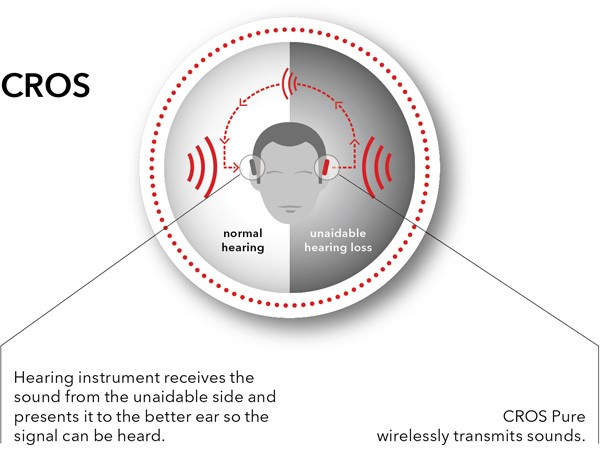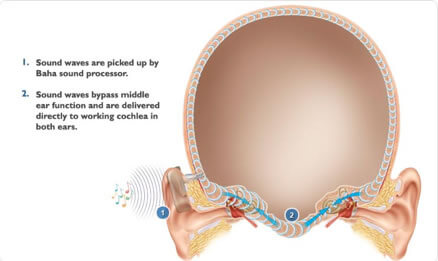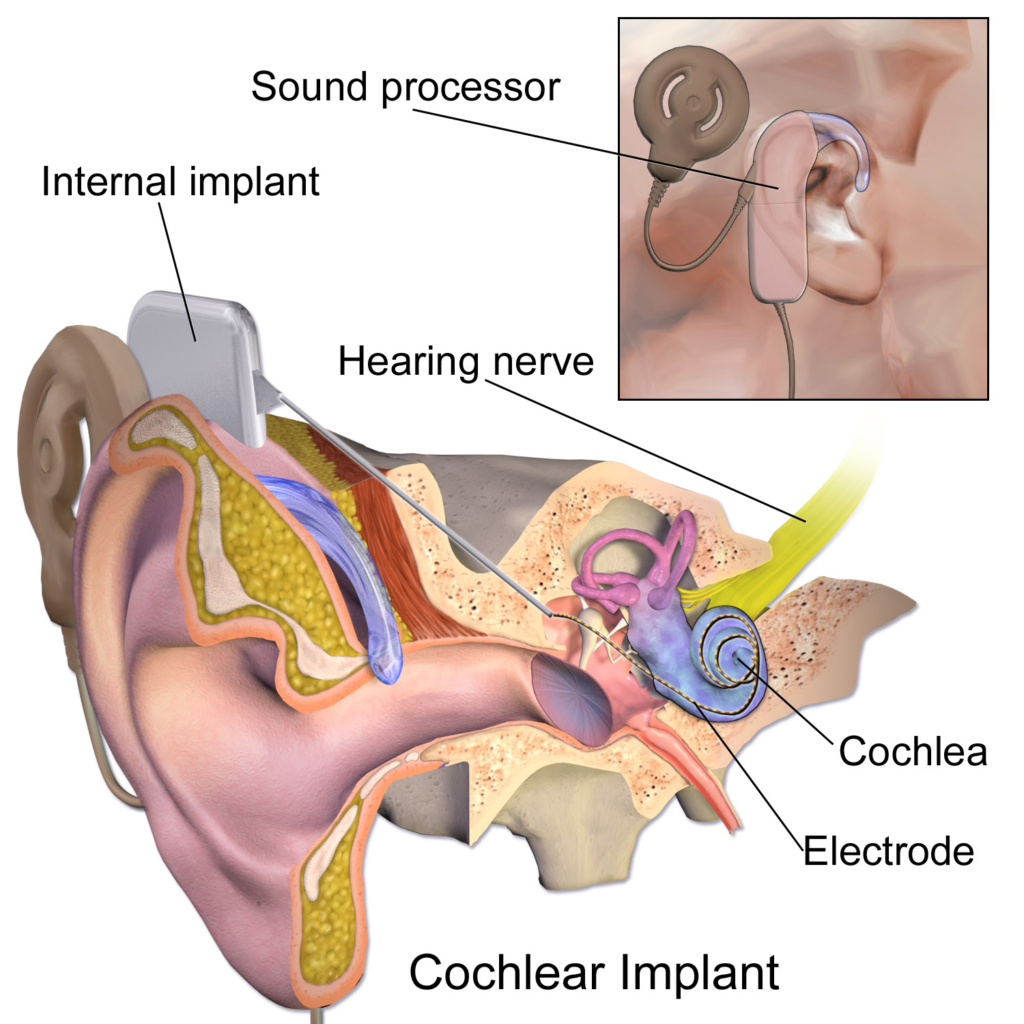Solutions for Single-sided Deafness
Some people experience what is referred to as ‘single-sided deafness’ - where there is limited hearing in one ear, while the other ear works quite well. There is an increased listening effort for people with single sided deafness due to the communication issues it creates. So while a person with single-sided deafness may still be able to hear speech well with their good ear, difficulties are experienced in a number of situations.
We have two ears for a reason – hearing binaurally provides many benefits. Our brain works in conjunction with our ears to localise sounds. The brain decodes which ear picked up the sound first, allowing us to know the direction of the sound. With hearing in only one ear, this ability becomes limited. Hearing in background noise also becomes challenging as the brain won’t be able to filter sounds as acutely as it can when both ears are detecting and identifying different sounds in background noise. The ‘head shadow’ effect is also a problem with single-sided deafness. This occurs because one ear has to process all the sounds from one side of the head, but the head ‘blocks’ the sound coming from the deaf side creating a ‘shadow’ across the sound from that side. Sounds from the affected ear may not reach the good ear.
So what are the hearing device solutions for people with single-sided deafness?
1. CROS aids (Contralateral Routing Of Signal)
A CROS aid system is used when a person has no useable hearing in one ear, while the other ear has normal hearing levels. A small hearing aid is worn in both ears and sounds from on the ‘deaf’ ear are re-routed to the good hearing ear. On the poor ear, the hearing aid is essentially just a microphone to pick up all the sounds on that side of the head. This is a good device for overcoming the head shadow effect, allowing the wearer to hear speech coming in from the poor ear as it is transferred to the good ear. Other benefits of this type of system are improved speech understanding and better awareness of sounds from both sides of the head. There are a number of hearing aid companies who supply CROS aid hearing systems.

2. BAHA (Bone Anchored Hearing Aid)
There are surgical and non-surgical options for this type of device. BAHA systems use mechanical vibration to deliver sounds from the poor ear to the good ear. A conductor and processor receive the sounds and send them through to the better hearing cochlea.
The surgical option requires a bone conduction implant (a magnet or metal post) to be placed under the skin into the skull on the ‘deaf’ ear. An audio processor is then ‘clicked’ over the implant. This device detects the sound signals, then sends them as an electrical signal to the implanted component. Here the signal is converted to mechanical vibrations that can travel through the skull to be picked up and heard by the opposite cochlea. This process negates the head shadow effect.
The non-surgical solution uses an abutment pad, which is adhered the skin behind the poor ear. The processor is then attached to this and the same process of detecting sound and altering an electronic signal to a mechanical one, to be transferred to the good cochlea for hearing, occurs.

Source Hopkins Medical
3. Cochlear Implants
A cochlear implant is another surgical procedure. The implanted electrodes by-pass the non-functioning hair cells in the deaf cochlea and stimulate the auditory nerve directly with electrical impulses. The impulses are then sent to the brain for interpretation. This type of device can bring back the benefits of binaural hearing.
Like the BAHA, a cochlea implant has two components – an external speech processor and an implant under the skin which attaches to the electrode array that are placed in the cochlea. The external microphone on the cochlear implant hearing aid picks up sound and sends this to the speech processor. The transmitter and receiver then translate signals from the speech processor which converts them to electrical impulses. These impulses are sent through the electrode array, to the auditory nerve and the brain for interpretation.
For people with single-sided deafness, a cochlear implant will give them two functioning cochleae. This means a reduction in listening effort, better understanding in background noise, increased speech discrimination and improved localisation skills. Recipients can experience spatial hearing and the head shadow effect is alleviated.
So you can see there are options for people with single-sided deafness. If this is something you suffer with, talk to your Hearing Healthcare professional to see what option might suit you.

Source Wikipedia
Need Help Finding Hearing Aids?


